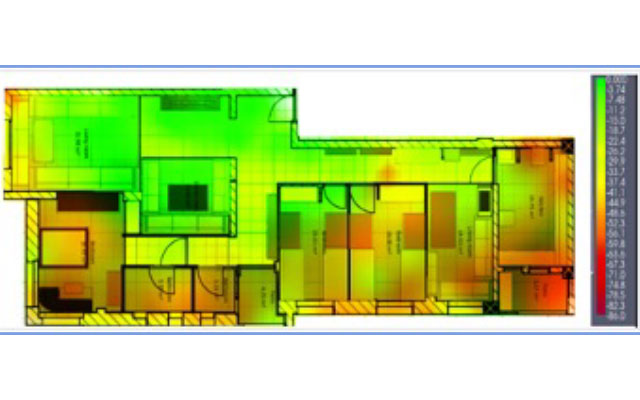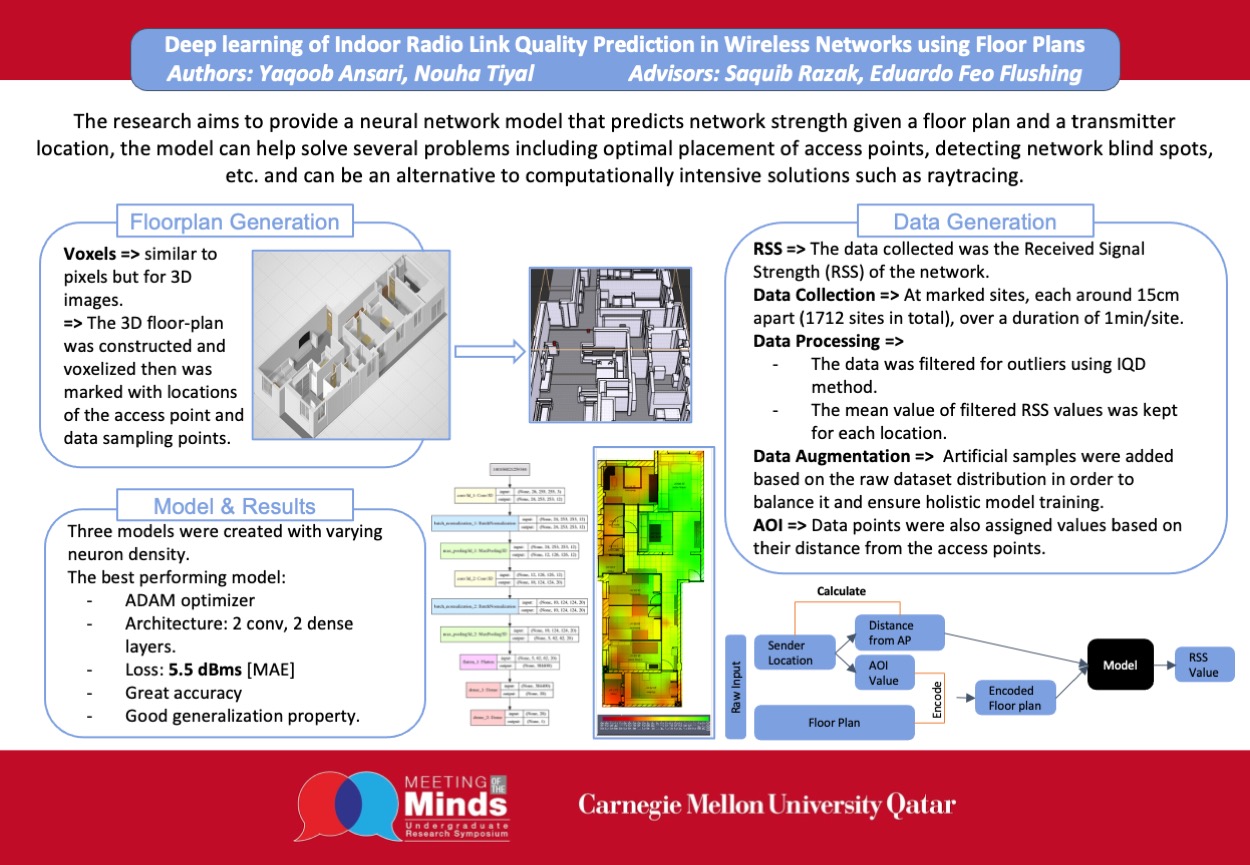With significant advancements in machine learning and deep learning, Convolutional Neural Networks (CNNs) have shown surprisingly good performance in handling both classification and regression problems. Given 3D floor plans of buildings and indoor measurements data of Wi-Fi received signal strength (RSS) at discrete locations, CNNs allow learning and approximating the underlying factors of signal strength. In this project, we attempt to build a prediction model for wireless signal strength that, given the location of the transmitter and the 3D floor plan sectioning of the area surrounding the transmitter and the receiver, it returns an accurate estimate of the RSS. Our approach, based on deep convolutional neural networks, differs from previous work in that (i) it can generalize to unseen environments, and (ii) it is the first work, to the best of our knowledge, to use 3D maps to build a signal strength prediction model and validate its results using real data. The proposed neural network model can help solve several problems, including optimal placement of access points, detecting network blind spots, etc., and can be an alternative to computationally intensive solutions such as raytracing. Experimental results show that CNNs can be used for predicting indoor radio link quality with a performance with a Mean Absolute Error (MAE) of 4.4 (dBm) and sufficient generalization property.



